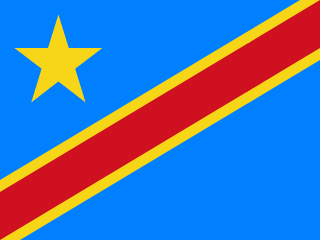DR Congo - Environment

As far as the environment of DR Congo is concerned, there have been . As for nvironment - international agreements, we have; .
About the environment of DR Congo
| Climate | We have tropical; hot and humid in equatorial river basin; cooler and drier in southern highlands; cooler and wetter in eastern highlands; north of Equator - wet season (April to October), dry season (December to February); south of Equator - wet season (November to March), dry season (April to October) |
|---|---|
| Revenue from forest resources | |
| Revenue from coal | |
| Waste and recycling | Municipal solid waste generated annually: 14.385 million tons (2024 est.) |
| Total renewable water resources | 1.283 trillion cubic meters (2022 est.) |
| Major rivers (by length in km) | |
| Total water withdrawal | |
| Municipal | 464.9 million cubic meters (2022 est.) |
| Industrial | 146.8 million cubic meters (2022 est.) |
| Agricultural | 71.9 million cubic meters (2022 est.) |
| Land Use | |
| Agricultural land | 15.5% (2022 est.) |
| Agricultural land: arable land | arable land: 6.6% (2022 est.) |
| Agricultural land: permanent crops | permanent crops: 0.9% (2022 est.) |
| Agricultural land: permanent pasture | permanent pasture: 8% (2022 est.) |
| Forest | 54.7% (2022 est.) |
| Other | 29.8% (2022 est.) |
| Urbanization | |
| Urban population | 47.4% of total population (2023) |
| Rate of urbanization | 4.33% annual rate of change (2020-25 est.) |
| Major urban areas (Pop) | 16.316 million KINSHASA (capital), 2.892 million Mbuji-Mayi, 2.812 million Lubumbashi, 1.664 million Kananga, 1.423 million Kisangani, 1.249 million Bukavu (2023). |
All Important Facts about DR Congo
Want to know more about DR Congo? Check all different factbooks for DR Congo below.









